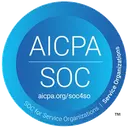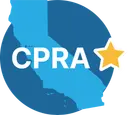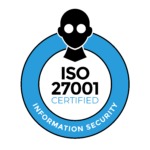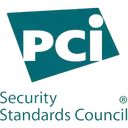For enterprise compliance leaders, the data security audit process has become an endless loop of spreadsheets, status meetings, and evidence requests. What should be a strategic initiative to protect your organization has devolved into a resource-draining exercise that keeps your team stuck in reactive mode.
The signs are everywhere: Compliance managers juggling multiple frameworks with redundant evidence requests. IT teams constantly interrupted for screenshots and configurations. Auditors requesting “just one more thing” weeks after you thought you were done. And through it all, the gnawing concern that despite all this effort, something crucial might slip through the cracks.
It’s not just you. Large enterprises across industries are discovering that traditional audit approaches simply cannot scale to meet today’s complex compliance demands. With regulatory requirements multiplying and cyber threats evolving daily, the old way of managing data security audits isn’t just inefficient—it’s becoming a genuine business risk.
But here’s the reality: while the complexity of enterprise data security audits isn’t going away, the painful, manual processes that make them feel overwhelming absolutely can. Leading organizations are transforming their approach to data security audits through integrated frameworks, automated evidence collection, and continuous compliance monitoring. This guide will show you how to break free from audit chaos and build a streamlined, predictable process that scales with your enterprise needs.
The growing importance and complexity of data security audits for enterprises
Today’s enterprises face unprecedented pressure to protect sensitive data while demonstrating compliance across multiple regulatory frameworks. A robust data security audit program isn’t just a checkbox exercise—it’s a strategic imperative for enterprise risk management.
Expanding regulatory landscape
The proliferation of data protection regulations like GDPR, CCPA, and HIPAA has created a complex web of compliance requirements.
Matt Udicious, Director of InfoSec Assurance at Thoropass states:
The enterprise compliance landscape in 2025 is more complex than ever, with companies seeking solutions for an expanding array of frameworks beyond just ISO 27001 and SOC 2.
We’re seeing increasing demand for comprehensive coverage across additional niche and regional standards like NIST,ISO 42001, ISO 27018, NIS2, DORA, and more.
Matt Udicious
Director of InfoSec Assurance
Thoropass
These changes reflect the global nature of business and evolving regulatory environments. Enterprises need scalable, intelligent solutions that transform compliance from a challenge into a strategic advantage, helping them navigate this intricate ecosystem efficiently.
Each framework demands specific security controls, documentation, and evidence of continuous monitoring. For enterprises operating across jurisdictions, managing these overlapping requirements without a systematic approach leads to redundant work and increased compliance risk.
Evolving threat environment
The financial impact of data breaches continues to rise, with the average cost now exceeding $4.88 million (IBM). Modern cyber threats—from sophisticated ransomware operations to targeted social engineering attacks—require enterprises to maintain comprehensive visibility into their security posture. Regular security audits provide the structured assessment needed to identify vulnerabilities before they can be exploited.
Enterprise infrastructure complexity
Today’s enterprise technology landscape combines legacy systems, cloud services, and distributed workforce tools—each introducing new security considerations. Managing data security across this complex ecosystem requires a systematic audit approach that can:
- Assess security controls across hybrid environments
- Monitor distributed access points and data flows
- Validate security measures for remote and on-premise operations
- Ensure consistent policy enforcement across the technology stack
As companies grow and their tech use expands, their security risks evolve with it. Enterprises need to balance continuous compliance, while not overburdening already fatigued compliance teams who are facing endless audits.
How this is achieved depends on each organization, but the way audits have been done historically just won’t suffice anymore.
Matt Udicious
Director of InfoSec Assurance
Thoropass
Why traditional data security audits won’t cut it
Traditional audit approaches that worked a decade ago are breaking under the weight of modern enterprise requirements. Let’s examine why legacy processes are failing to meet today’s demands.
1. The manual evidence burden
Compliance teams spend countless hours chasing screenshots, updating spreadsheets, and managing version control across hundreds of evidence items. This manual approach isn’t just inefficient—it’s a major source of errors and delays. When evidence gathering is one of the most time-consuming parts of an audit, strategic security improvements take a back seat to administrative tasks.
2. Organizational silos
The disconnect between compliance, IT, and security teams creates a fragmented audit process. Evidence requests bounce between departments, context gets lost in email threads, and duplicated efforts waste valuable resources. Without a centralized system, teams struggle to maintain audit momentum and transparency.
3. Modern infrastructure complexity
Today’s enterprise architectures span multiple clouds, on-premises systems, and edge devices. Traditional audit processes weren’t designed for this distributed reality. Tracking security controls across hybrid environments requires a more sophisticated approach than legacy checklist-based methods can provide.
4. Keeping pace with evolving threats
Traditional audit processes struggle to address modern security challenges like fileless malware, zero-day exploits, and AI-powered attacks. When evidence collection takes months, your security assessment is outdated before it’s complete. Today’s threat landscape demands real-time visibility and continuous control validation.
5. Audit fatigue
The endless cycle of evidence collection, review, and updates is burning out enterprise teams, especially when managing multi-framework compliance. When one audit ends, another begins, leaving no time for process improvement or strategic planning. This constant pressure leads to rushed submissions, incomplete documentation, and increased compliance risk.
6. Unpredictable timelines and costs
Traditional audits are plagued by scope creep and hidden costs. What starts as a straightforward certification often expands into months of back-and-forth with auditors, additional evidence requests, and mounting consulting fees. This unpredictability makes it impossible to budget effectively or plan resource allocation.
The modern approach to data security audits
After years of struggling with inefficient audit processes, forward-thinking enterprises are embracing a new paradigm. By leveraging modern technology and strategic approaches, organizations can transform data security audits from a dreaded burden into a streamlined, predictable process that strengthens their security posture.
The power of automation
Manual evidence collection is becoming obsolete. Purpose-built platforms now automate the most time-consuming aspects of security audits, from evidence gathering to control tracking. This shift reduces audit cycles by up to 50% while improving accuracy and completeness. Teams can finally focus on strategic security improvements instead of administrative tasks.
Framework integration: Upload once, comply with many
Leading organizations are abandoning the siloed approach to compliance frameworks. Modern platforms map controls across multiple standards, allowing evidence to simultaneously satisfy requirements for ISO 27001, SOC 2, and other frameworks. This integrated approach eliminates redundant work and accelerates multi-framework certification.
Continuous compliance monitoring
The days of point-in-time assessments are over. Real-time monitoring and automated control validation ensure your organization maintains continuous compliance between formal audits. This proactive approach catches issues early, reduces audit preparation time, and provides ongoing assurance to stakeholders.
Collaborative compliance
Modern platforms create a single source of truth where compliance teams, IT staff, and auditors can collaborate efficiently. Centralized evidence repositories, automated workflows, and real-time status tracking eliminate the communication gaps that traditionally delay audits and frustrate teams.
AI-powered intelligence
Artificial intelligence is revolutionizing the audit process by:
- Automating evidence collection and validation
- Identifying control gaps and suggesting remediation steps
- Predicting compliance issues before they impact audit outcomes
- Streamlining document review and classification
- Providing intelligent insights for continuous improvement
How Thoropass revolutionizes the data security audit
While modern audit approaches offer significant improvements over traditional methods, enterprise organizations need more than just better tools—they need a complete solution that transforms audits. This is where Thoropass stands apart.
- Purpose-built platform: Thoropass was purpose-built to handle the most demanding enterprise audit requirements. Our platform doesn’t just manage evidence—it orchestrates the entire audit process across your organization:
- Automated control mapping across complex technology stacks
- Intelligent evidence collection that adapts to your infrastructure
- Custom workflows that align with enterprise approval processes
- Scalable architecture that grows with your compliance program
- Multi-framework capability: Beyond basic framework mapping, Thoropass delivers genuine multi-framework optimization:
- Upload evidence once and automatically satisfy requirements across ISO 27001, SOC 2, and other frameworks
- Smart control mapping that identifies overlap opportunities
- Cross-framework reporting to demonstrate compliance status across all standards
- Streamlined certification processes that reduce audit cycles by 67% on average
- Expert-guided success: Technology alone isn’t enough. Thoropass pairs our platform with seasoned compliance professionals who understand enterprise complexity:
- Dedicated compliance advisors who’ve managed enterprise audits
- Strategic guidance on framework selection and scope optimization
- Best practices from hundreds of successful enterprise implementations
- Direct auditor collaboration to prevent evidence gaps and delays
- Predictable costs and timelines: We’ve engineered variability out of the audit process with:
- Clear timelines based on your specific framework requirements
- Transparent pricing with no hidden fees or scope creep
- Automated evidence collection that eliminates manual delays
- Real-time status tracking across all workstreams
- Proven methodology that consistently delivers on-time completion
By combining cutting-edge technology with deep compliance expertise, Thoropass doesn’t just improve the audit process—we transform it.
Ready to learn more? Schedule a demo today!
CASE STUDY
Elpha Secure achieves SOC 2 renewal 90% faster than average
Elpha Secure, a cybersecurity software for insurance companies, breezed through SOC 2 recertification thanks to Thoropass.

Related Posts
Stay connected
Subscribe to receive new blog articles and updates from Thoropass in your inbox.
Want to join our team?
Help Thoropass ensure that compliance never gets in the way of innovation.














.png)